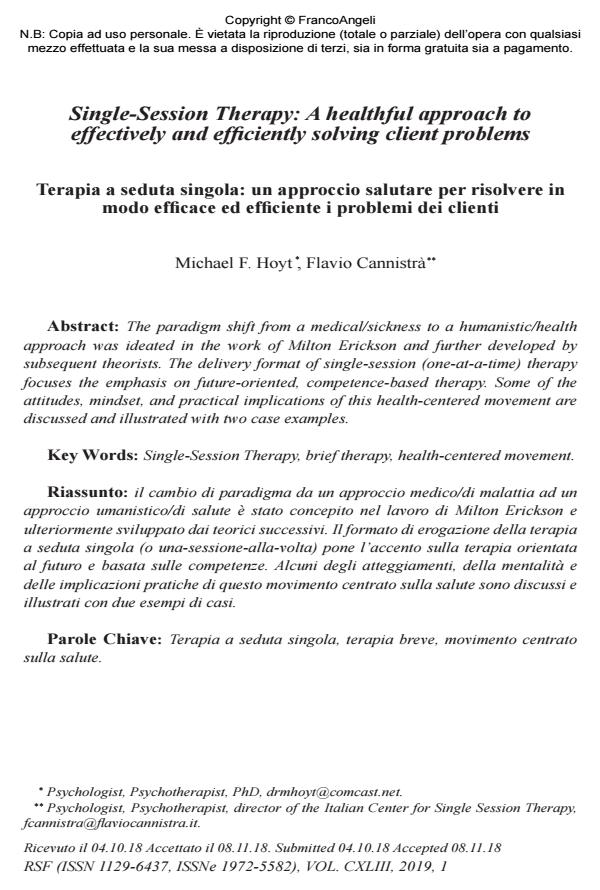Single-Session Therapy: A healthful approach to effectively and efficiently solving client problems
Titolo Rivista RIVISTA SPERIMENTALE DI FRENIATRIA
Autori/Curatori Michael F. Hoyt, Flavio Cannistrà
Anno di pubblicazione 2019 Fascicolo 2019/1
Lingua Inglese Numero pagine 13 P. 73-85 Dimensione file 1842 KB
DOI 10.3280/RSF2019-001005
Il DOI è il codice a barre della proprietà intellettuale: per saperne di più
clicca qui
Qui sotto puoi vedere in anteprima la prima pagina di questo articolo.
Se questo articolo ti interessa, lo puoi acquistare (e scaricare in formato pdf) seguendo le facili indicazioni per acquistare il download credit. Acquista Download Credits per scaricare questo Articolo in formato PDF

FrancoAngeli è membro della Publishers International Linking Association, Inc (PILA)associazione indipendente e non profit per facilitare (attraverso i servizi tecnologici implementati da CrossRef.org) l’accesso degli studiosi ai contenuti digitali nelle pubblicazioni professionali e scientifiche
The paradigm shift from a medical/sickness to a humanistic/health approach was ideated in the work of Milton Erickson and further developed by subsequent theorists. The delivery format of single-session (one-at-a-time) therapy focuses the emphasis on future-oriented, competence-based therapy. Some of the attitudes, mindset, and practical implications of this health-centered movement are discussed and illustrated with two case examples.
Il cambio di paradigma da un approccio medico/di malattia ad un approccio umanistico/di salute è stato concepito nel lavoro di Milton Erickson e ulteriormente sviluppato dai teorici successivi. Il formato di erogazione della terapia a seduta singola (o una-sessione-alla-volta) pone l’accento sulla terapia orientata al futuro e basata sulle competenze. Alcuni degli atteggiamenti, della mentalità e delle implicazioni pratiche di questo movimento centrato sulla salute sono discussi e illustrati con due esempi di casi.
Parole chiave:Terapia a seduta singola, terapia breve, movimento centrato sulla salute.
Michael F. Hoyt, Flavio Cannistrà, Single-Session Therapy: A healthful approach to effectively and efficiently solving client problems in "RIVISTA SPERIMENTALE DI FRENIATRIA" 1/2019, pp 73-85, DOI: 10.3280/RSF2019-001005